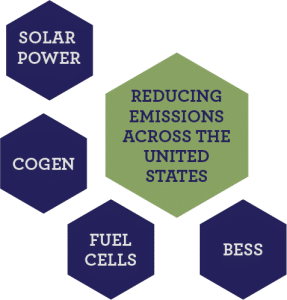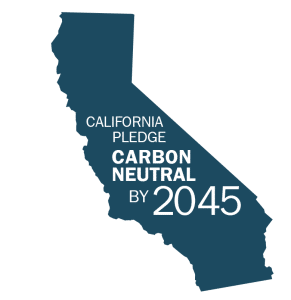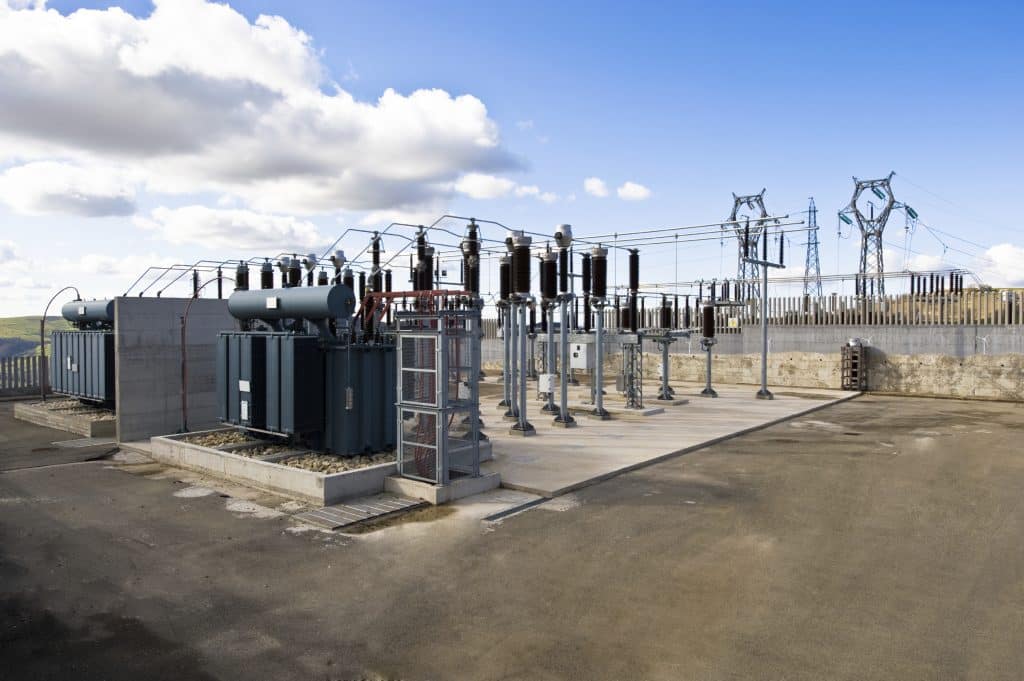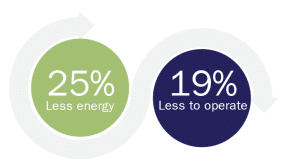Carbon Neutrality Initiatives on the Rise
Growing numbers of cities and states across the U.S. are setting aggressive standards to reduce carbon dioxide emissions to address the mounting threat of climate change. From New York to California, state and local governments are mandating that new buildings meet stringent benchmarks for design, construction, materials and energy-usage. Many are also setting deadlines for compliance, requiring that new buildings, transportation fleets, utilities and infrastructure approach carbon-neutrality in a decade, and be completely carbon-neutral by 2050.
Such state and local mandates, coupled with the unprecedented affordability of clean electricity and the availability of zero-net carbon fuel alternatives, are expected to drive work in “green” design and construction to new heights.
Prudent businesses and public agencies that proactively integrate carbon neutrality into their short- and long-term capital plans will be best positioned to enjoy the many potential benefits including capital and energy cost reductions. Those that wait until they’re compelled to change may be forced to scramble, or face fines or other financial penalties.
Implementing Carbon-Neutral Solutions
 While carbon-neutrality—adding no extra CO2 to the atmosphere— isn’t a new idea, it is a concept that has gained significant momentum over the past decade as the world grapples with the effects of climate change. Along with all of its benefits, reducing carbon also presents a number of serious technical and economic challenges. The shift towards electrification often requires making critical improvements and capacity upgrades to aging electrical systems to better support increased loads resulting from building and transportation electrification.
While carbon-neutrality—adding no extra CO2 to the atmosphere— isn’t a new idea, it is a concept that has gained significant momentum over the past decade as the world grapples with the effects of climate change. Along with all of its benefits, reducing carbon also presents a number of serious technical and economic challenges. The shift towards electrification often requires making critical improvements and capacity upgrades to aging electrical systems to better support increased loads resulting from building and transportation electrification.
Notwithstanding these challenges, organizations throughout the U.S. are taking action, implementing a variety of solutions, including on-site solar power, cogeneration, low-emission fuel cells, battery energy storage, and sustainable design and construction to reduce their emissions. To heat buildings electrically, a range of heat-pump technologies are being deployed, from geo-exchange and variable refrigerant flow systems to large heat-recovery chillers.
Initiatives at the State and Local Levels
In California, which has pledged to be carbon-neutral by 2045, the City of Berkeley recently became the Golden State’s first municipality to ban the use of natural gas in new buildings – and other towns are expected to soon follow.
 Nearby, San Francisco International Airport became the first airport in the world to build a net-zero facility. The Airport Operations Facility, completed in 2015, generates enough of its own power to be self- sufficient. The airport already relies heavily on environmentally friendly solar power, netting more than 1.5 megawatts of capacity from solar installations throughout its property.
Nearby, San Francisco International Airport became the first airport in the world to build a net-zero facility. The Airport Operations Facility, completed in 2015, generates enough of its own power to be self- sufficient. The airport already relies heavily on environmentally friendly solar power, netting more than 1.5 megawatts of capacity from solar installations throughout its property.
In southern California, Los Angeles International Airport (LAX) is nearing completion of a massive technology upgrade that will improve energy efficiency and resiliency. LAX has endured power quality issues and outage events for nearly two decades, and anticipates needing another 60 megawatts of power to accommodate projected growth over the next 10 to 15 years. To meet this demand, LAX is considering on-site power generation and storage to improve power quality and resilience and get it closer to its net-zero goal.
Denver International Airport (DEN), one of the first airports in the U.S. to be accredited for measuring and reducing carbon emissions, hosts one of the nation’s largest commercial airport solar farms. Burns recently helped DEN assess using a microgrid to improve resiliency and lower carbon. Microgrids are local energy networks that sustain power during outages caused by storms, grid emergencies or other interruptions. Hartsfield-Jackson Atlanta International Airport—the world’s busiest—also is taking steps to make its power supply more reliable following an electrical fire in late 2017 that caused an outage and shut down the airport for 11 hours, disrupting to the entire North American air system.

“…Microgrids are local energy networks that sustain power during outages caused by storms, grid emergencies or other interruptions…”
Colleges and universities also are leading the change to carbon-neutral, and are revamping their electrical systems to boost resiliency and self-sufficiency.
Increased energy efficiency will be vital as New York City moves away from natural gas as a heating source. A recent New York State ban on new natural gas pipelines has led both Consolidated Edison and National Grid to halt new natural gas hookups in parts of the city and on Long Island. The stoppage follows several initiatives the city has recently adopted to meet carbon-neutral and sustainability goals.
The City of Philadelphia recently signed an agreement to build a massive solar farm on 700 rural acres in south- central Pennsylvania to power more than 20 percent of city buildings. The city’s 20-year lease-purchase agreement with a local solar company represents one of the largest such agreements in the nation, and is a big first step in Philly’s ambitious goal to reduce citywide carbon emissions by 80 percent by 2050.
The Southeastern Pennsylvania Transportation Authority (SEPTA), which operates rail, trolley and bus service for nearly four million people in the Philadelphia area, recently added 25 electric buses to its fleet, with more expected next year. One of the nation’s largest and oldest transit providers, SEPTA already runs the nation’s biggest fleet of zero-emission buses on the East Coast, and hopes to convert its entire fleet to electric in the coming years.
Highly customized, short- and long-term planning will be essential to capitalizing on existing and emerging technologies that can help organizations work toward carbon neutrality in ways that are both timely and cost-effective.
Early, Proactive and Thoughtful Planning
Amid these changes, many owners may wait until they’re forced to act. Others however, will not, recognizing that energy efficiency, carbon neutrality and sustainability make good business sense by addressing customer and stakeholder concerns and lowering overall operating costs. High-performance buildings, for example, use 25 percent less energy and cost 19 percent less to operate than non-certified buildings, making them increasingly attractive to buyers.

Highly customized, short-and long-term planning will be essential to capitalizing on existing and emerging technologies that can help organizations work toward carbon neutrality in ways that are both timely and cost-effective. Hiring consultants with proven expertise in the planning, design, construction and commissioning of a range of low- and zero-carbon systems and solutions can help. They also can oversee regulatory compliance throughout a project’s life cycle, help obtain funding and permitting, and pinpoint and minimize potential challenges and disruptions. In addition, experienced consultants can help navigate projects’ inherent complexities and intricacies, help prioritize capital projects, and help identify the best ways to meld new innovations with legacy buildings and systems.
Consultants also can help drive on-time, on-budget projects by recommending and overseeing project delivery mechanisms, including public-private partnerships (P3s), that can offload public agency costs and risks.
Much will change in the next decade as increasing numbers of cities, states businesses and universities set carbon neutrality goals. Early, proactive, thoughtful planning, combined with carefully engineered solutions, can help entities successfully navigate that change, and make the daunting doable.


